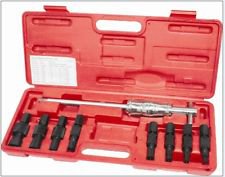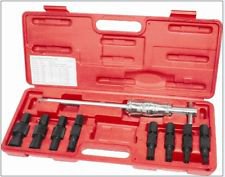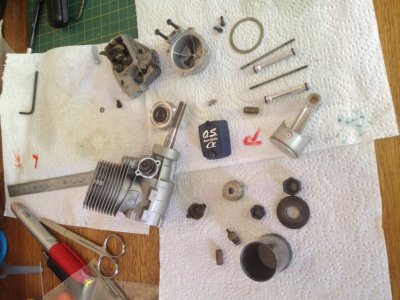I used the hydraulic method on a blind roller bearing on the top end of my Bridgeport. This is after wrestling with it for more than a day. A needle bearing or bushing will press out easier than the roller bearing that I had. For the hole in the bottom, just insert a small circle of brass to cover the hole. As the pressure increases, the seal will be made tighter. Hold it in place with a little grease.
Since my bearing was large (1.5" or so), it took a couple packings of grease. But I had it out in about 3 minutes. It's one of those techniques that once you use it, you'll never forget it. I had issue with grease passing through the broken roller bearing seals, but the high pressure, quick onset of the grease was too much for it and the bearing popped right out. I also covered the bearing with a couple layers of plastic wrap, to keep the grease contained when I hit the piston with my rubber mallet.




